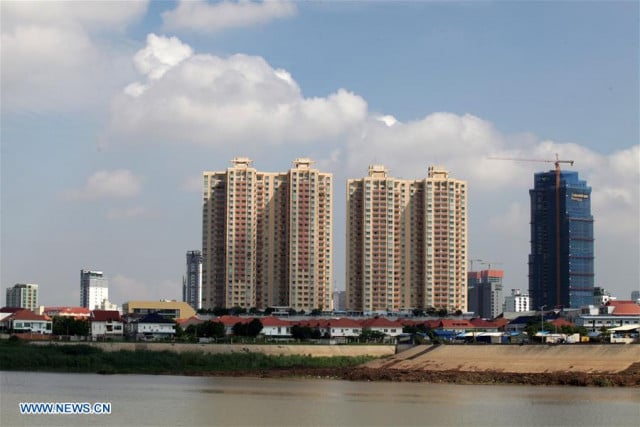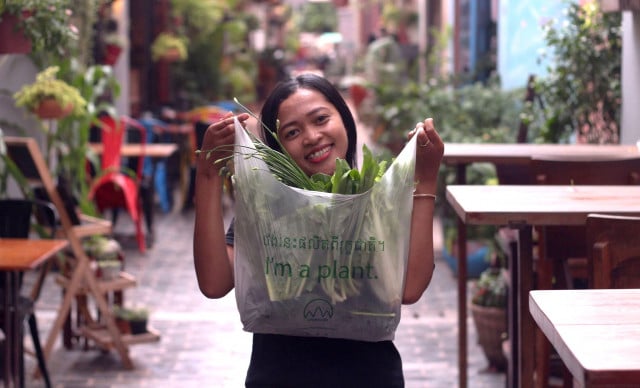From Rice Growing to Condo Growing: an Agrarian Revolution Underway

- Lim Tola
- August 6, 2019 8:57 AM
Within no more than two or three decades, chances are that one will be able to count on the fingers of one hand the number of elderlies to have drawn a plough through a waterlogged rice field after the first rainy-season downpours.
To their astonished grandchildren, they will recount that, in the past, one of the country’s high-ranking official—if not the King himself—would, in mid-May or early June, lead a plough pulled by two magnificent sacred white oxen to trace the “sacred furrow,” the first of the upcoming rice-growing season.
The oxen, having completed this ritual task, would then sate their appetite with water and various food products prepared for them by the Royal Palace’s Brahman priests. Based on what they had consumed, the priests would predict how the crops would yield that year based on information that could only come from the sacred books to which they had access.
The crowd at the ceremony would leave either happy or concerned depending on whether a great or bad crop had been predicted.
There were years with good rice crops and years with bad ones, years with more soya and sesame that one could ever use, and then years when farmers would be plagued by drought or floods.
Hearing this, the boldest children would sweetly make fun of those old people.
Rice fields, rice…why not mangoes, pineapples, passion fruit, fish, beans, soya, lotus flowers, carrots, ginger, durians or sweet potatoes while you’re at it. All this, grandfather, grows at AEON Mall 10, they will say, laughing.
Those elderlies, brought back to reality by this childish banter, might then recall what had happened during previous decades.
Following years of war and devastation, money suddenly started to flow freely. Where was it coming from? First from international aid that poured in maybe to make up for past mistakes, then from neighboring countries’ investors who were advised and guided by local intermediaries eager to make up for years of hardship.
Like the rain that makes rice grow, money made buildings spring up in cities. Then, having reached the sky, cities spilled over rice fields that had already gotten smaller, having been gobbled up by industrial crops grown for export.
In rice fields around cities, people started to treat as nonsense the Royal Plowing Ceremony’s predictions and to focus on sections about “infrastructure and project development” in the media.
Everywhere, there were new roads, new bridges that would generate, as if by magic, urban plans for new cities, high-end gated housing developments and condos.
On weekends, home and condo owners would sit on the bank of their rice field, blissfully happy as they admired their square meters whose value was bloated through speculation.
Is it growing, they would be asked.
No but it’s getting higher, they would respond.
And the day came when, the last parcel of the rice field having been sold, all that was left was a forest of condos stretching as far as the eye could see.
Supermarkets sold imported rice and children in schoolyards would tell each other farfetched stories about sacred oxen that ate and drank…















